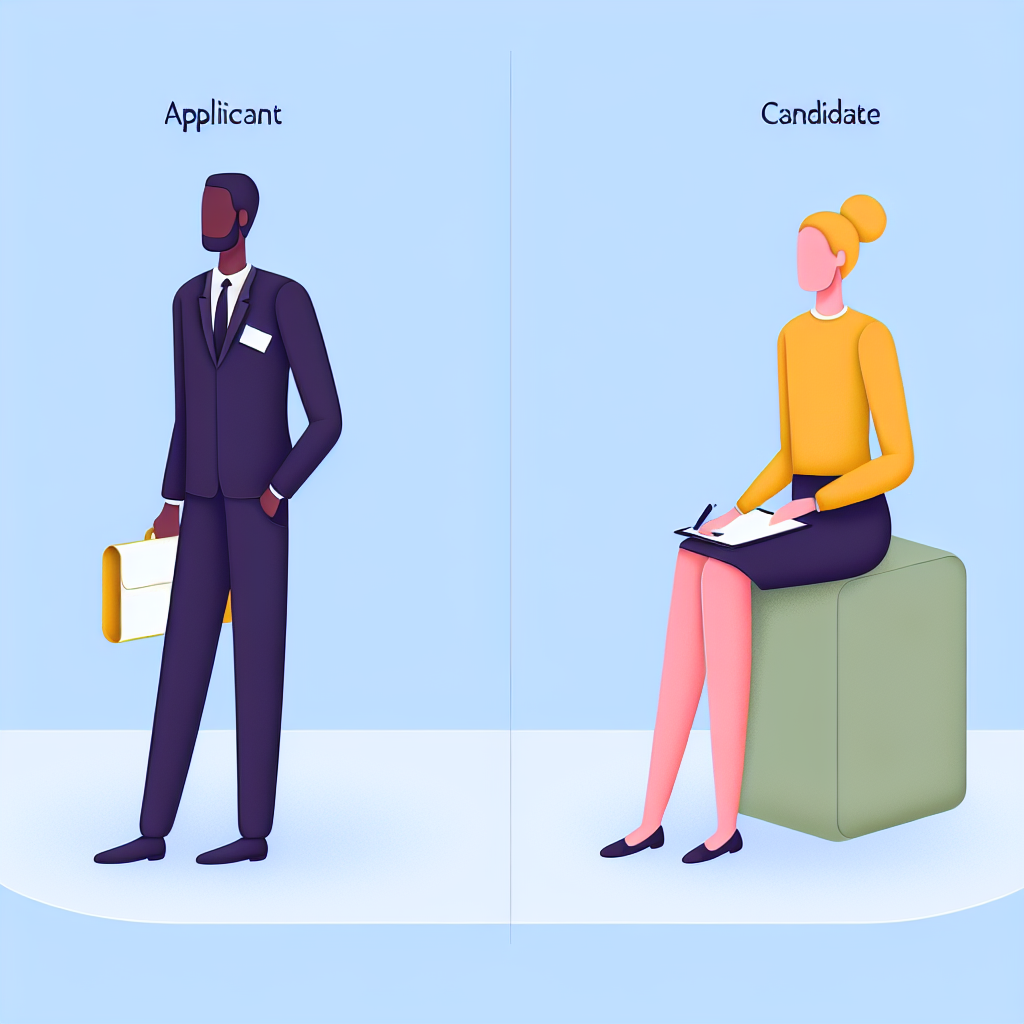
In the intricate landscape of recruitment, the terminology we use is critical. Terms such as “applicant” and “candidate” may seem interchangeable, yet they signify differing stages in the hiring process and play distinct roles in the journey of job seekers and employers alike. For Human Resource professionals, clarifying these differences can enhance recruitment strategies and improve candidate experience, ultimately leading to better hiring outcomes.
Understanding the Terminology
Definitions and Importance
An applicant is someone who has responded to a job posting by submitting their resume, cover letter, or completed an employment application. This individual expresses interest in the position but has not necessarily undergone any evaluation. As a result, applicants may lack the qualifications required for the role.
Contrastingly, a candidate is an applicant who has successfully navigated the initial screening processes and is under serious consideration for the role. Candidates have demonstrated qualifications that align with the job requirements, having typically progressed through several stages of evaluation, including resume screenings, interviews, and assessments.
Key Differences
- Level of Evaluation: Applicants have yet to be screened, whereas candidates have been evaluated and deemed worthy of further consideration.
- Potential Outcomes: Applicants run the risk of being deemed unqualified early on, while candidates have a higher likelihood of being approached for interviews or job offers.
- Eligibility for Further Consideration: Applicants tend to apply broadly to various positions, often lacking targeted skills, while candidates represent a more focused, genuine interest in the specific role.
Current Trends in Recruitment
Technological Advancements
The recruitment industry has undergone radical changes, largely driven by technological advancements. Applicant Tracking Systems (ATS) allow large numbers of individuals to apply for positions with relative ease. However, this proliferation of applications often results in a situation where many applicants are not qualified, causing frustration for hiring teams aiming to identify suitable candidates.
Effective Communication
Communication remains a cornerstone of effective recruitment. Applicants should receive some form of acknowledgment regarding their application status, while candidates require more detailed engagement as they progress through the hiring process. Providing timely updates and constructive feedback fosters goodwill and maintains a positive employer brand.
Streamlining the Hiring Process
By recognising the distinction between applicants and candidates, HR professionals can streamline hiring efforts. This practice allows teams to focus on those who meet essential qualifications and exhibit potential for success within the role, reducing the time and resources expended on unqualified individuals.
Benefits of Distinguishing Between Applicants and Candidates
More Efficient Hiring Decisions
Identifying the differences between applicants and candidates is paramount for making informed hiring decisions. This focused approach significantly diminishes wasted time on unqualified candidates, allowing recruitment teams to zero in on individuals who meet the required criteria and who aspire to excel in their positions.
Respect and Professionalism
All candidates deserve respectful treatment throughout the application process. Employers should foster clear communication regarding application statuses, regardless of whether an individual is classified as an applicant or a candidate. This practice not only upholds professional standards but also garners trust and builds a favourable reputation within the talent market.
Mitigating Bias
Prioritising candidates over applicants can also play a significant role in reducing unconscious bias in hiring. Emphasising job qualifications rather than personal inclinations promotes a fair selection process and enables HR professionals to identify those best suited for specific roles.
Implementing Effective Recruitment Strategies
Refining Job Descriptions
Creating well-defined job descriptions is essential for attracting the right talent. These descriptions should focus on the skills and qualifications necessary for candidates to be considered. By clearly outlining expectations, businesses can filter out applicants who do not meet the criteria before they enter the process.
Leveraging Technology
Utilising technology to improve candidate screening is crucial. HR professionals can employ AI-driven tools that sift through resumes, assessing both soft and hard skills in applicants. This optimisation of the initial recruitment phase results in more qualified candidates entering subsequent stages.
Engagement and Retention
Engagement goes beyond hiring; it includes retention strategies that keep employees motivated and satisfied in their roles. Regular feedback sessions, career progression discussions, and training provisions ensure that candidates who become employees feel valued and committed to the organisation.
Conclusion
In the recruitment process, distinguishing between applicants and candidates is essential for enhancing the effectiveness of hiring strategies and the overall candidate experience. Recognising the distinct roles that these groups play enables HR professionals to navigate the hiring process more effectively, allocate resources wisely, and communicate with respect and professionalism.
As we move forward in the evolving employment landscape, understanding these distinctions will remain vital for attracting and retaining exceptional talent. By embracing an informed approach, HR professionals can improve organisational outcomes and establish a more robust hiring framework.
For further insights and detailed information, refer to the original source findings on the differences between applicants and candidates here: Perplexity Insights.
Vadim Kouznetsov is a distinguished entrepreneur and the visionary founder and CEO of JobXDubai.com, the UAE’s rapidly expanding job board. Renowned for his expertise in bridging the gap between job seekers and employment opportunities, Vadim has become a leading authority in the recruitment and job market of Dubai.
